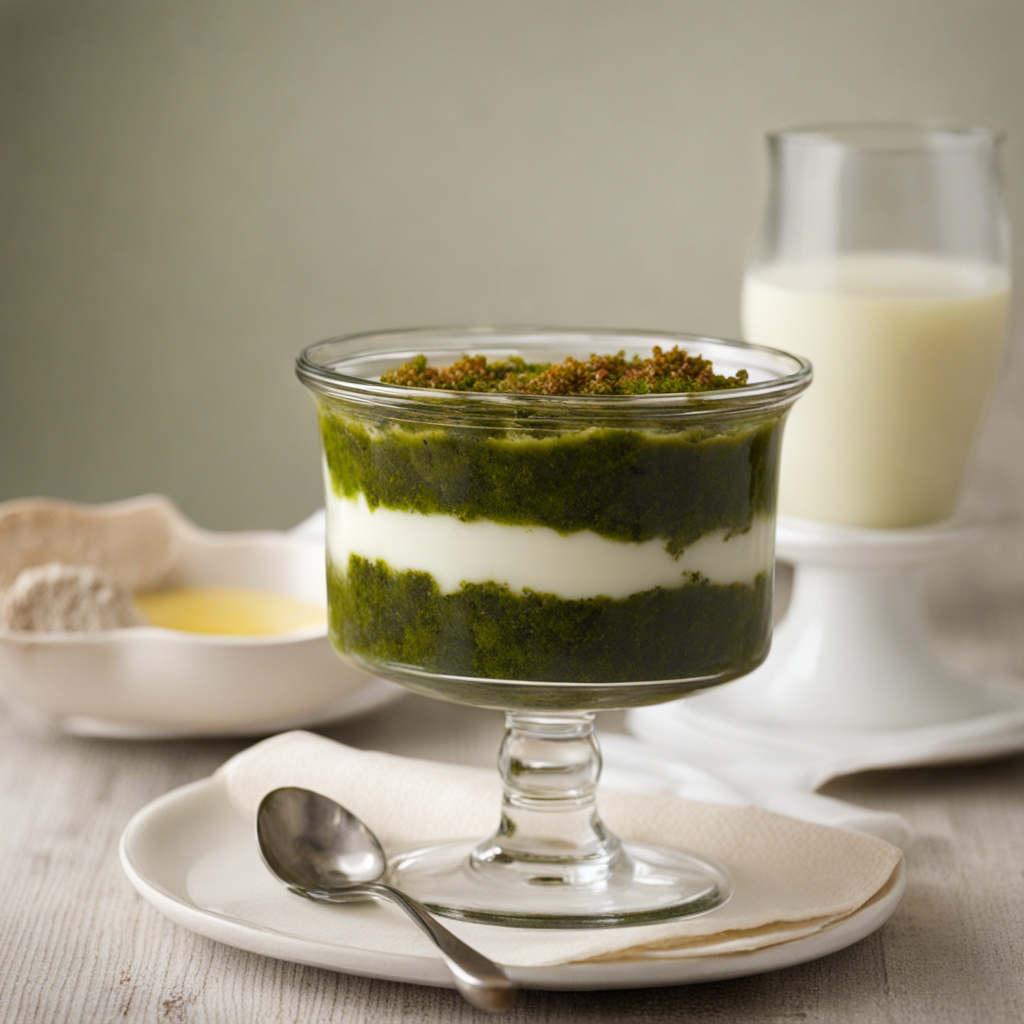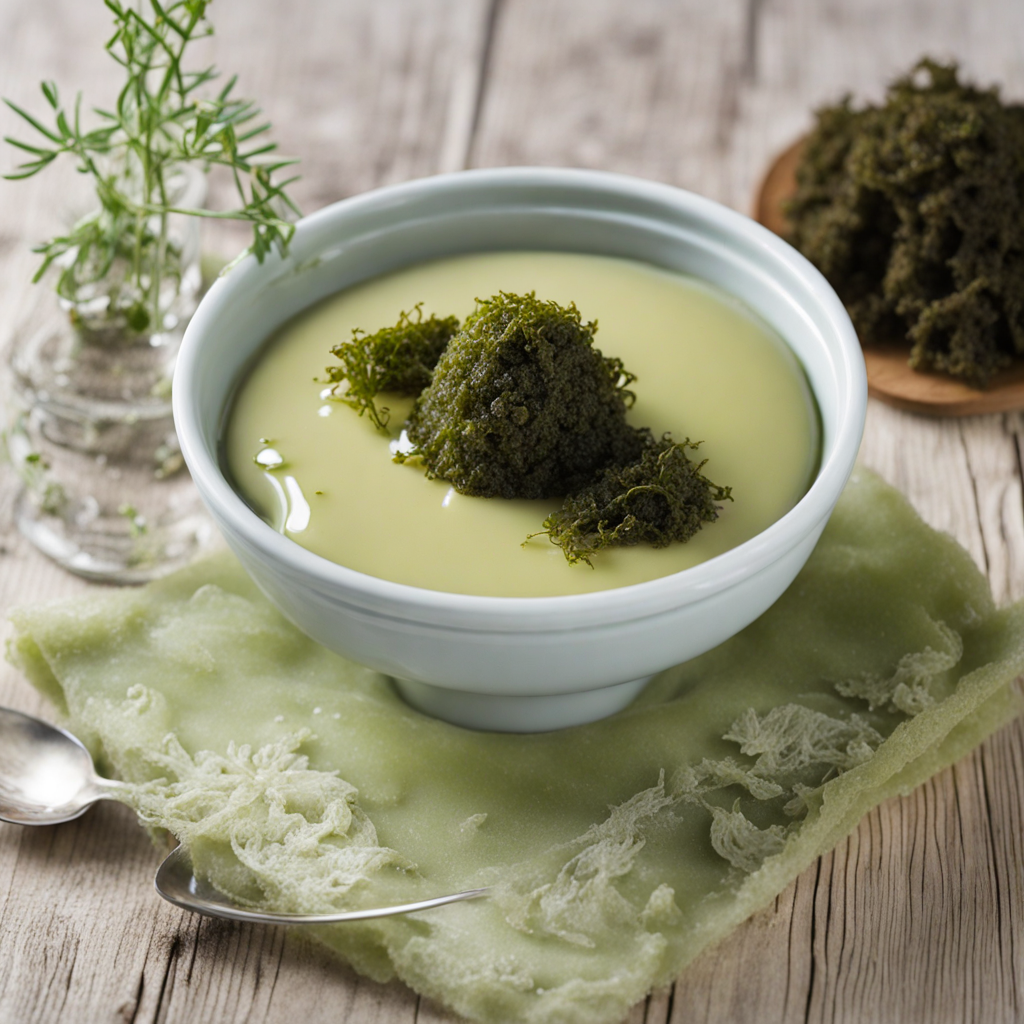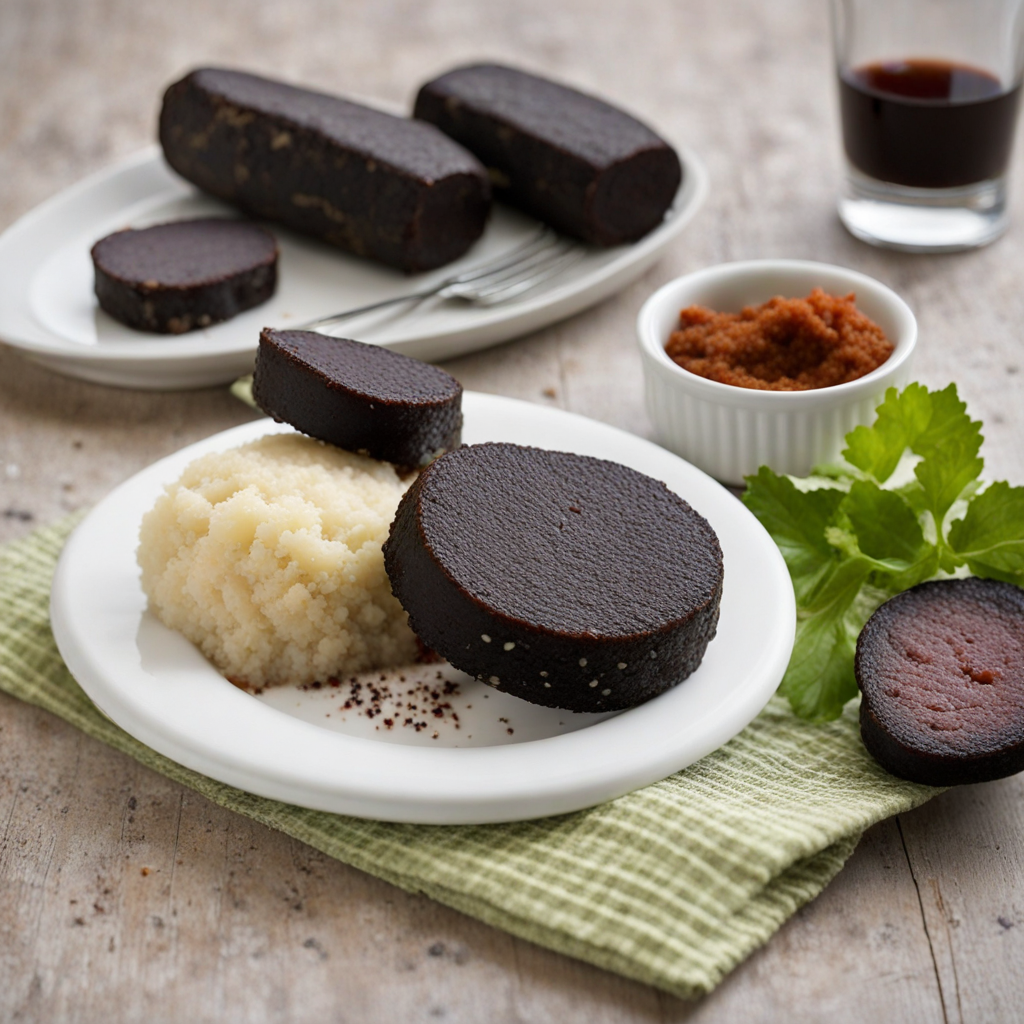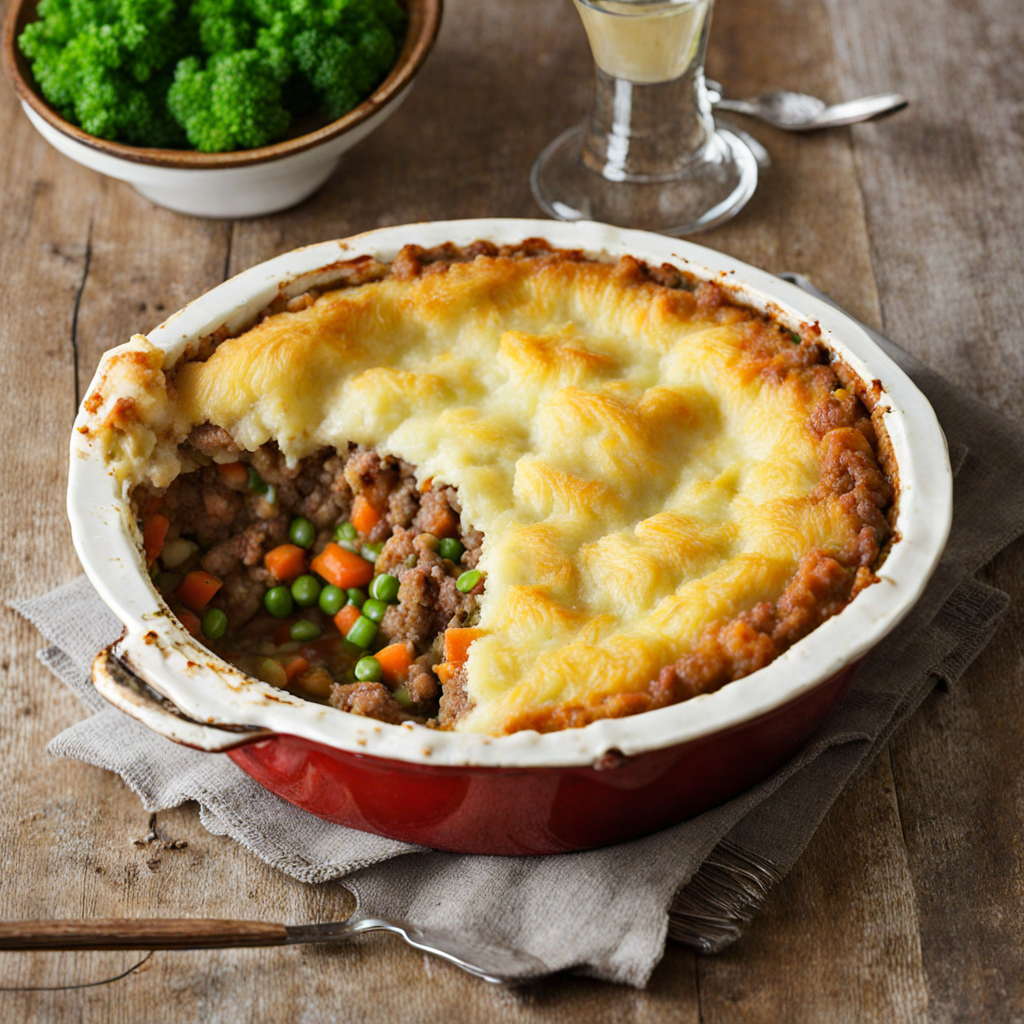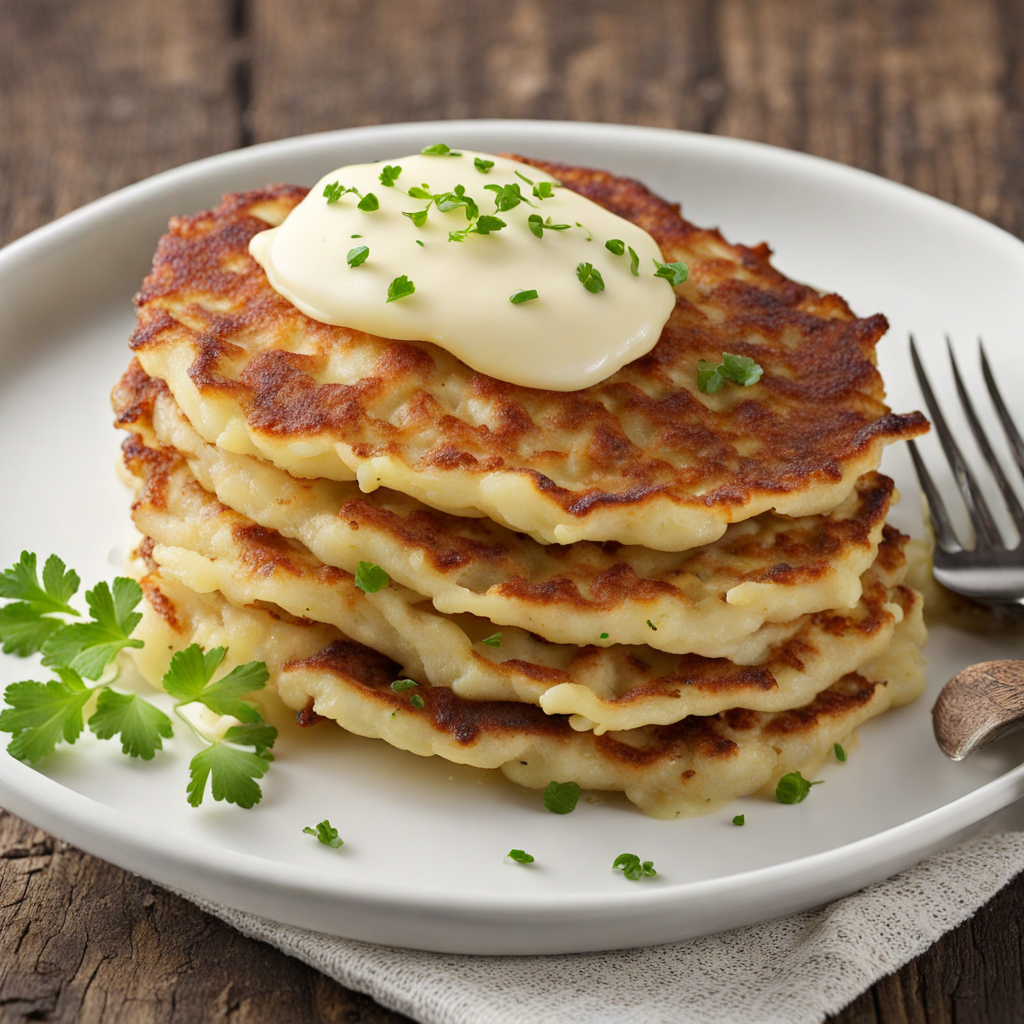Carrageen Moss Pudding
Carrageen Moss Pudding is a delightful traditional Irish dessert that embodies the essence of coastal cuisine. Made from carrageen moss, a type of red seaweed harvested from the shores of Ireland, this pudding offers a unique texture that is both creamy and slightly gelatinous. The moss is soaked in water, then simmered to extract its natural gelling properties, creating a luxurious base for the pudding. Often flavored with hints of vanilla, citrus, or almond, each spoonful delivers a subtle herbal note that sets it apart from other desserts, inviting you to explore the flavors of the sea in a sweet form. The preparation of Carrageen Moss Pudding is an art in itself. After the moss is cooked and strained, it is combined with milk or cream and sweetened with sugar to achieve a balanced taste. The pudding is then chilled until it firms up, making it perfect for serving in elegant molds or individual cups. Traditionally, it is accompanied by a layer of fresh fruit compote or a drizzle of rich caramel, enhancing its flavor profile and adding a pop of color to the presentation. This combination makes for a visually appealing dish that is as inviting as it is delicious. What makes Carrageen Moss Pudding truly special is its connection to Irish heritage and its wholesome ingredients. The use of seaweed not only provides a unique taste but also boasts various health benefits, including rich minerals and vitamins. Each bite of the pudding is a taste of Ireland's natural bounty, transporting you to the rugged coastlines where the seaweed is gathered. With its light texture and refreshing flavor, this dessert is perfect for any occasion, whether enjoyed after a hearty meal or as a standalone treat on a warm day.
How It Became This Dish
Origins of Maraíonn Púdóg Maraíonn Púdóg, a traditional Irish dish, has its roots deeply embedded in the rich tapestry of Irish culinary history. The name itself translates to "sea pudding," which hints at its coastal origins. This dish is primarily associated with the regions bordering the Atlantic Ocean, particularly in the west of Ireland, where the abundance of seafood has significantly influenced local cuisine. The earliest references to Maraíonn Púdóg can be traced back to the 18th century, though it is likely that variations of the dish existed long before then, as communities relied on the sea for sustenance. Historically, the dish was made as a means of utilizing available resources, often incorporating ingredients like seaweed, fish, and grains. The use of seaweed, particularly varieties like carrageen or dulse, reflects the ingenuity of Irish cooks who sought to make the most of what was available from their surroundings. These ingredients not only added flavor but also nutritional value, making Maraíonn Púdóg a hearty meal for families living in coastal communities. Cultural Significance Maraíonn Púdóg is more than just a dish; it embodies the spirit of Irish resilience and adaptability. In a time when food scarcity was common, families would come together to create meals that were both nourishing and economical. This unity in the kitchen reflects broader Irish cultural values, where communal dining and sharing meals have always played an essential role in social life. The dish gained particular significance during the Great Famine of the 1840s when many traditional food sources became scarce. Coastal communities, however, continued to rely on the sea for sustenance, and Maraíonn Púdóg provided a means of survival. It became a symbol of hope and resourcefulness, representing the ability to thrive even in challenging circumstances. The communal aspect of preparing and sharing the dish further solidified its place in the hearts of the Irish people. Ingredients and Preparation Traditionally, Maraíonn Púdóg is made using a combination of fish—often cod or haddock—along with seaweed, oatmeal, and sometimes potatoes. The process begins with cleaning and preparing the fish, which is then combined with the other ingredients to create a thick, savory pudding. The mixture is typically steamed or boiled in a cloth or pudding basin, allowing the flavors to meld together beautifully. In addition to the main ingredients, local variations may include herbs, spices, or other seafood, showcasing the culinary creativity of different regions. In some areas, the pudding might be served with a side of brown bread or butter, enhancing its rustic appeal. The dish’s flexibility in preparation has allowed it to adapt over time, remaining relevant in contemporary Irish cuisine while still honoring its traditional roots. Evolution Through Time As Ireland moved into the 20th century, the culinary landscape began to change. The availability of processed foods and globalization introduced new flavors and ingredients, which impacted traditional dishes like Maraíonn Púdóg. While some families continued to prepare the dish using age-old recipes, others adapted it to fit modern tastes, incorporating new techniques and ingredients. In the latter half of the 20th century, there was a resurgence of interest in traditional Irish foods, spurred by a growing appreciation for local, sustainable cooking. Chefs and home cooks alike began to explore their culinary heritage, leading to a revival of dishes such as Maraíonn Púdóg. This revival was not just about nostalgia; it also aligned with broader movements toward organic farming and the use of local produce. As a result, the dish has found a new audience, with contemporary interpretations appearing on menus across Ireland and beyond. Modern Interpretations Today, Maraíonn Púdóg is experiencing a renaissance in Irish cuisine. Innovative chefs are reimagining the dish by incorporating modern cooking techniques and flavors while still respecting its traditional roots. For example, some chefs may use sous-vide techniques to ensure a precise texture, while others might experiment with different types of seafood or grains, such as quinoa or wild rice. In addition to fine dining establishments, Maraíonn Púdóg has found its way into casual eateries and food festivals, where it is celebrated as a symbol of Irish heritage. Food enthusiasts are eager to learn about its history and preparation methods, leading to cooking classes and workshops dedicated to this iconic dish. This growing interest is helping to ensure that Maraíonn Púdóg remains a staple in both traditional and contemporary Irish cuisine. Global Influence and Recognition As Irish culture has spread globally, so too has the appreciation for dishes like Maraíonn Púdóg. Irish diaspora communities around the world have embraced their culinary heritage, often hosting events that celebrate traditional foods. In places such as the United States, Canada, and Australia, Maraíonn Púdóg has found a second life, often featured at Irish pubs and cultural festivals. Moreover, the dish has garnered attention in the culinary world, with food writers and historians highlighting its significance in discussions about sustainable and traditional food practices. Its emphasis on local ingredients and resourcefulness resonates with contemporary movements seeking to reconnect with the land and promote healthy eating. Conclusion Maraíonn Púdóg stands as a testament to the resilience of Irish culture and its ability to adapt and thrive through changing times. From its humble beginnings as a means of survival to its current status as a celebrated dish, it reflects the spirit of community, resourcefulness, and a deep connection to the sea. As interest in traditional foods continues to grow, Maraíonn Púdóg will undoubtedly maintain its place in the hearts—and kitchens—of both Irish people and food enthusiasts worldwide.
You may like
Discover local flavors from Ireland


